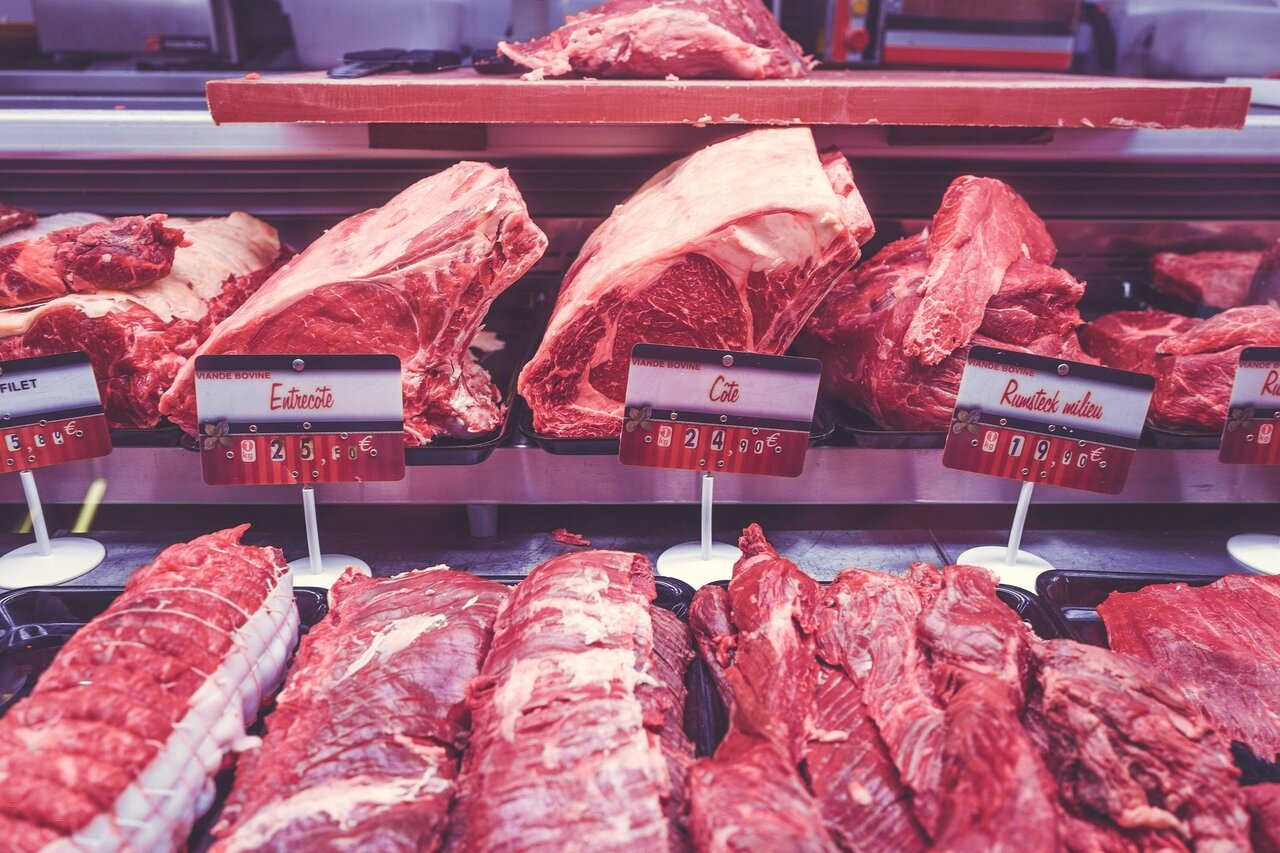Food & Climate
Germany could reduce its agricultural emissions by 22.5%, or more than 15mn tonnes, a year by putting a carbon tax on high-emitting foods, such as beef which would attract the highest taxes at a maximum of €4.36 a kilogramme.
Overall, meat and dairy will attract the highest carbon tax, research by the Potsdam Institute for Climate Impact Research shows.
Reflecting the environmental impact of agriculture in food prices would encourage consumers to shift to more sustainable diets and reduce emissions, claims the PIK research published in the academic journal Food Policy.
Agricultural emissions accounts for 8% of Germany’s without taking into account emissions from land use changes, according to the study seen by “Food & Climate” platform.
The country’s 2019 Federal Climate Change Act commits the government to reducing annual emissions in the agricultural sector from 62mn tonnes to 56mn tonnes by 2030.
If Germany applied a carbon tax of around €200 a tonne of greenhouse gas emissions to common food items, beef would attract the highest taxes at a maximum of €4.36 a kilogramme, followed by lamb and mutton and goat meat at a maximum of €4.02/kg.
In the EU, 80% of the greenhouse gas emissions from the agricultural sector come from meat and dairy, the paper says. Livestock greenhouse gas emissions include methane from digestion in sheep and cows, and nitrous oxide from fertilisers; and CO₂ from land-use changes, such as deforestation and the drainage of moorland.
Meanwhile, butter and cheese would be subject to carbon taxes of up to €2.45/kg and €2.44/kg respectively. Yoghurt and milk would increase by about 25 cents per kilogram.
Agricultural emissions reduction
Greenhouse gas emissions in German agriculture could be significantly reduced in a socially equitable way through a climate fee on food, combined with climate dividends.
This is the key finding of a study by the Potsdam Institute for Climate Impact Research (PIK).
The study suggests that pricing greenhouse gas-intensive foods could help meet climate targets for agriculture while generating over 8.2 billion Euros annually.
If these funds were redistributed to households through a lump-sum compensation scheme, it would ease the financial burden on households, especially those with lower incomes and at the same time encourage sustainable consumption.
Using a demand model that provides a detailed and representative picture of how German households respond to price changes, the researchers assessed the effects of GHG pricing on consumption and associated emissions.

“Households would tend to buy more food that is less carbon-intensive on average, such as vegetables. A climate fee would not only directly benefit climate protection, but could also encourage sustainable consumption,” explains PIK scientist Max Franks, author of the study.
Climate dividend
In the researchers’ model, the 8.2 billion euros generated by the climate fee are returned to consumers as a climate dividend, providing substantial relief to lower-income households, while wealthier households would bear slightly higher costs. “This form of redistribution helps to create a social balance that can promote the acceptance of such measures,” Franks continues.
Such redistribution is central to ensuring the public acceptability of the policy, PIK researcher Max Franks tells Sustainable Views. Without a payback scheme, poorer households would be “burdened [by the carbon tax] because they spend a higher proportion of their income on food”, he says.
“Socially balanced” climate polices in general have a higher social acceptance, Franks adds, comparing Switzerland’s carbon tax on buildings and industry based on an approach where the tax revenue is distributed back to the public, and France’s planned rise in tax on diesel and petrol, which resulted in the 2018 yellow vest protests.
The authors of the study also see significant potential for broad public acceptance in the combination of a climate fee and dividend. It is crucial to clearly communicate that the measures effectively reduce emissions, that all revenues are returned to the public and that lower-income households are specifically supported.
In August 2023, in a weeklong trial, German discount retailer Penny has increased the prices of nine products – mostly dairy and meat – to reflect their true cost on the climate (including soil and water use) and human health. Implemented across its 2,150 branches, the experiment spotlights carbon labelling in a novel way, and follows a 2020 study by the supermarket that showed the price of meat and dairy would be far higher when factoring in the true environmental cost of the food supply chain.
It meant that cheese was as much as 94% more expensive, while sausage prices were jacked up by 88%. In contrast, vegan schnitzels – with their significantly lighter environmental impact – were only 5% dearer, according to “green queen”.
The Penny trial came four years after German politicians proposed raising the VAT on meat to 19%, a change that research shows would be supported by 70% of citizens. The argument is that animal proteins use up too much land and water while emitting massive amounts of greenhouse gases, worsening climate change by the day – so the prices of these products should reflect that.

Now, PIK research has given weight to this reasoning. They suggest that simply charging a climate levy on animal products could cut Germany’s overall emissions by 2%, a decrease six times larger than the total emissions of the domestic aviation sector.

